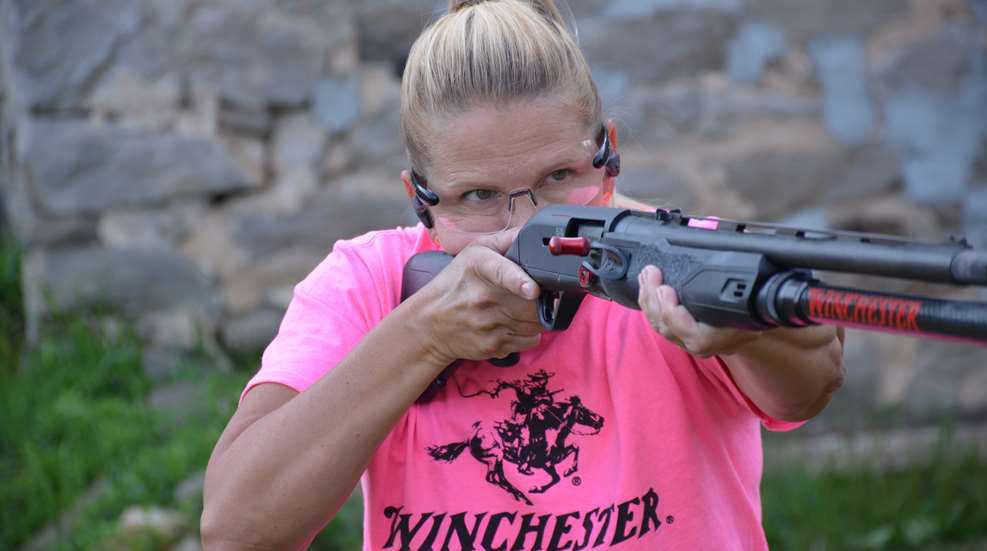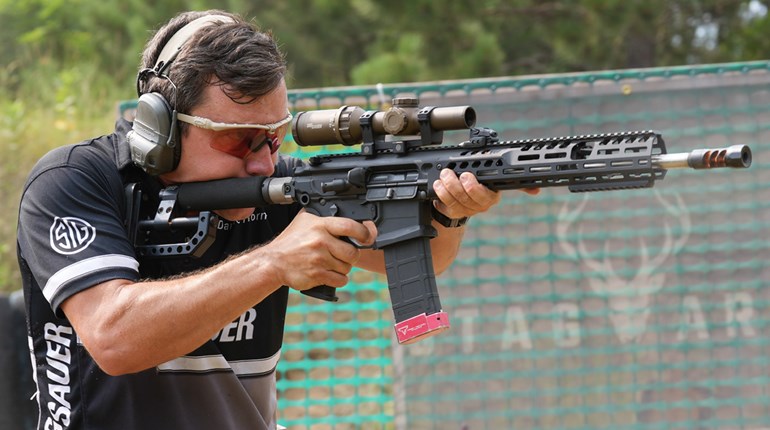
Do you know someone who doesn't want to shoot a shotgun because of the “kick?” Or perhaps someone let them shoot without proper instruction, and now they are shotgun shy. Proper form and understanding how to manage recoil will help anyone not just manage a shotgun, but enjoy it. Let’s look at a few key points to help you kick that “kick” to the curb.
1. Cheek Weld
When shooting a shotgun, you MUST get your face firmly on the stock EVERY time. If not, the gun will “hit” your face as it recoils. This is where many people feel something uncomfortable and walk away from shotguns.
To keep this from happening, press your face down hard on the gun! Imagine that you are using your face to put leverage on the gun—because you are. And if you do that, one of the major ways people experience “kick” can be eliminated.
If the recoil that you feel through the stock is uncomfortable, or you are introducing someone new to shotgun shooting, consider a recoil pad. There are foam versions that you can purchase online and just stick on the gun. But the first thing to do when beginning is to learn proper cheek weld.

Incorrect cheek weld.

Correct cheek weld
2. Pull the Gun Into Your Shoulder
For someone who was unfortunate enough to earn a welt on her shoulder from shooting a shotgun, learning to hold it tight to the body is an important step. It might take some convincing for that person to commit—but they can’t get a welt or bruise if they are holding the gun TIGHT in their shoulder. If I wanted to hit you hard enough to cause a bruise, I wouldn’t hold my fist against your shoulder and try to bruise you. I’d stand back, get a good swing, and land a solid punch. The gun cannot “punch” you (kick) if it’s held so tightly to your body that it becomes an extension of your body.


To put it another way, think about a toddler thrashing his body and throwing a fit in your arms. You could let him flail around, but he might hit someone ,or headbutt you. If you hug him tightly, he doesn’t have the space and ability to move and thrash around. A shotgun could be thought of the same way. If it’s just resting in your arms, held loosely, and starts to thrash around, it’s going to smack into your body. If you hold it tightly enough, it can’t kick.
Those two notions are really THE crux of managing recoil in a shotgun—hold it tight to your body; and keep your face firmly on the stock.
3. Additional Methods of Managing Recoil
The other ways to really put the idea that a gun “kicks” to rest are about how you hold tension in your body and how you manage your weight to counter recoil.

Incorrect stance: Shooter is too bladed.

Incorrect stance: Shooter is too upright.

This is the correct stance for the shooter.
Get your body forward. This doesn’t mean sticking your backside out or just collapsing at your waist. It means shifting your weight forward over the balls of your feet. Think about how you would be balanced to face a wrestling opponent or to “dig” a volleyball—low, weight forward, and ready to use your body to counter what comes at you.

Roll your shoulder forward so that you are adding tension against the forces of recoil. Do not “chicken wing” your arm.
Hold tension in your core. Your abdomen and back also play a role in your body controlling recoil. Don’t stand waiting for recoil; stand with enough muscular tension that you can recover and manage the recoil as you come back onto target.
Proper position: How you stand. Face your torso or belly button at the target. Just like other forms of shooting benefit from using natural point of aim, shotgun shooting requires you to be facing your target. You need to be aligned facing the thing you are shooting at. Blading to the target means just your shoulder will absorb the recoil and that can hurt. Get as much of the mass of your body behind the gun as possible. Thinking of your belly button facing the target is a simple way to make sure you are not bladed.

Proper position of the gun: Get it in your shoulder pocket. The shotgun should not be out on your shoulder, or low in your armpit. It must be in the shoulder pocket. If the stock on your shotgun is too long to accomplish this, find a different gun (Youth model or someone’s that has had the buttstock shortened for a shorter length of pull.) If you’re introducing someone new, make sure the gun fits first. There’s no point ruining someone’s experience of shotgun shooting by giving them a gun that’s too large and causes them pain.
None of these changes to your form must be super exaggerated. But when you shoot a shotgun, you don’t want to simply stand up straight and hold a gun out in front of you. Your goal is to be forward and hold tension in your body so you’re not a “limp noodle” that’s thrown around and so your face is not smacked by the shotgun. Think about it like ballet: Even ballerinas can hold tension in their bodies. Using power can be graceful and subtle. Just because it’s a shotgun and it has recoil does not mean you cannot control it beautifully.














































